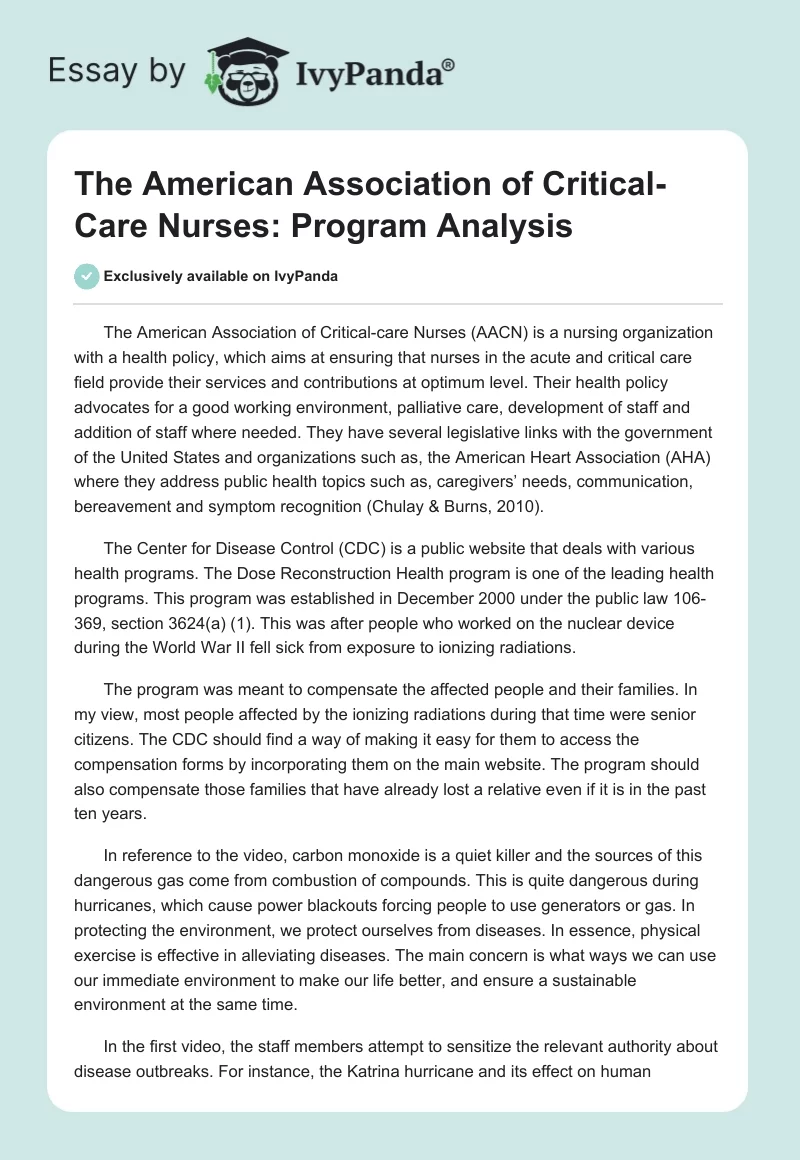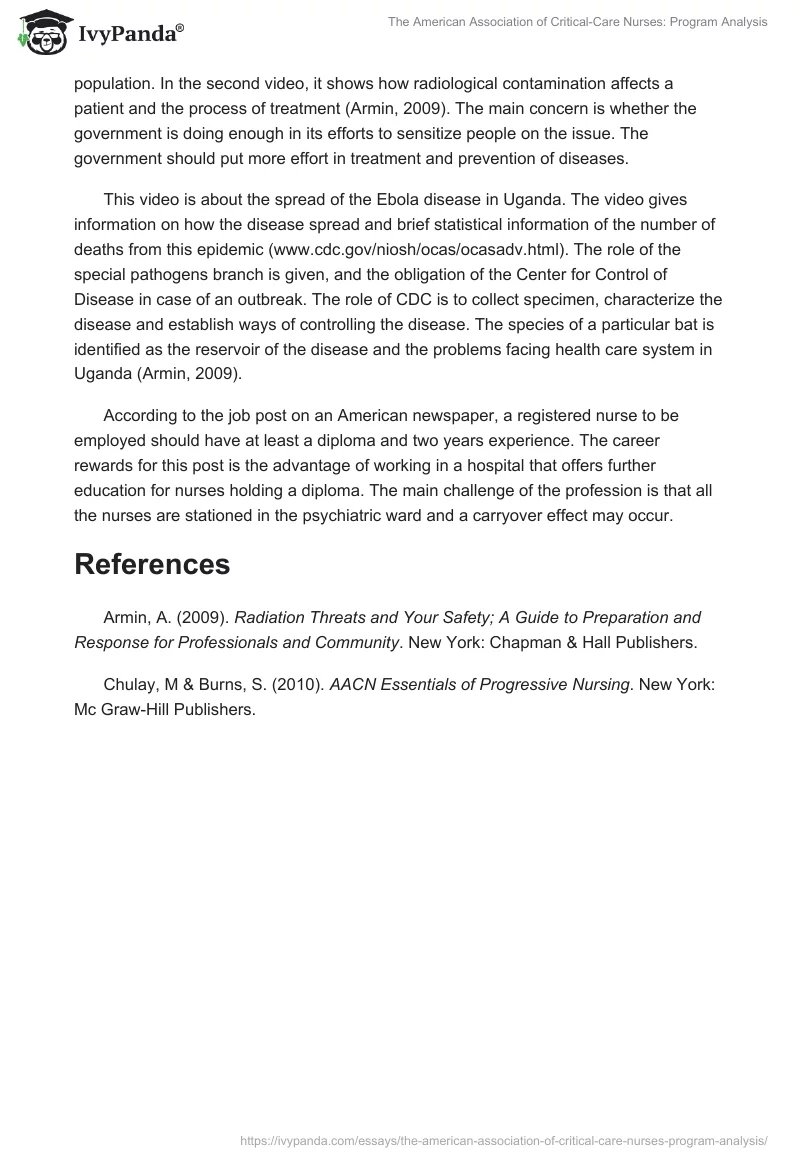The American Association of Critical-care Nurses (AACN) is a nursing organization with a health policy, which aims at ensuring that nurses in the acute and critical care field provide their services and contributions at optimum level. Their health policy advocates for a good working environment, palliative care, development of staff and addition of staff where needed. They have several legislative links with the government of the United States and organizations such as, the American Heart Association (AHA) where they address public health topics such as, caregivers’ needs, communication, bereavement and symptom recognition (Chulay & Burns, 2010).
The Center for Disease Control (CDC) is a public website that deals with various health programs. The Dose Reconstruction Health program is one of the leading health programs. This program was established in December 2000 under the public law 106-369, section 3624(a) (1). This was after people who worked on the nuclear device during the World War II fell sick from exposure to ionizing radiations.
The program was meant to compensate the affected people and their families. In my view, most people affected by the ionizing radiations during that time were senior citizens. The CDC should find a way of making it easy for them to access the compensation forms by incorporating them on the main website. The program should also compensate those families that have already lost a relative even if it is in the past ten years.
In reference to the video, carbon monoxide is a quiet killer and the sources of this dangerous gas come from combustion of compounds. This is quite dangerous during hurricanes, which cause power blackouts forcing people to use generators or gas. In protecting the environment, we protect ourselves from diseases. In essence, physical exercise is effective in alleviating diseases. The main concern is what ways we can use our immediate environment to make our life better, and ensure a sustainable environment at the same time.
In the first video, the staff members attempt to sensitize the relevant authority about disease outbreaks. For instance, the Katrina hurricane and its effect on human population. In the second video, it shows how radiological contamination affects a patient and the process of treatment (Armin, 2009). The main concern is whether the government is doing enough in its efforts to sensitize people on the issue. The government should put more effort in treatment and prevention of diseases.
This video is about the spread of the Ebola disease in Uganda. The video gives information on how the disease spread and brief statistical information of the number of deaths from this epidemic (www.cdc.gov/niosh/ocas/ocasadv.html). The role of the special pathogens branch is given, and the obligation of the Center for Control of Disease in case of an outbreak. The role of CDC is to collect specimen, characterize the disease and establish ways of controlling the disease. The species of a particular bat is identified as the reservoir of the disease and the problems facing health care system in Uganda (Armin, 2009).
According to the job post on an American newspaper, a registered nurse to be employed should have at least a diploma and two years experience. The career rewards for this post is the advantage of working in a hospital that offers further education for nurses holding a diploma. The main challenge of the profession is that all the nurses are stationed in the psychiatric ward and a carryover effect may occur.
References
Armin, A. (2009). Radiation Threats and Your Safety; A Guide to Preparation and Response for Professionals and Community. New York: Chapman & Hall Publishers.
Chulay, M & Burns, S. (2010). AACN Essentials of Progressive Nursing. New York: Mc Graw-Hill Publishers.


